تایلهای آکوستیک ویژهای که با الگوی اوریگامی های شرقی با یکدیگر ترکیب میشن و علاوه بر این که هندسهای پیچیده و غیر ساده تولید میکنن که کسلی فضا رو از بین می بره، می تونن بسته به شرایط بستر زاویه بگیرن و باز و بسته بشن و از این مهمتر این که می تونن بسته به شرایط صوتی به صورت اینتراکتیو از خودشون واکنش نشون بدن و زوایای بین صفحاتشون تغییر کنه....
اگه براتون امکان داشت قطعه ویدیوی همراه پست رو هم حتما مشاهده کنین. تصویرهای خوبی از فرآیند ساخت و اجرا و نصب وعملکرد این پانلها ارائه می ده.
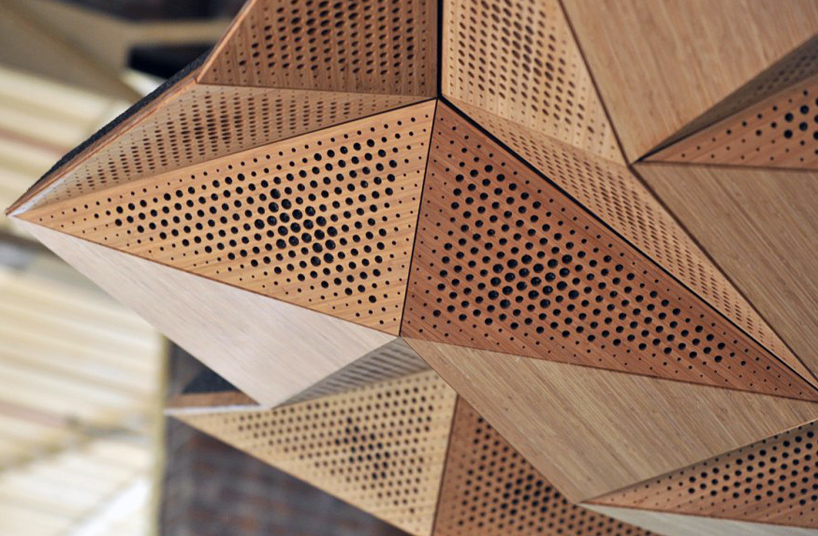
'resonant chamber' architectural panels couple rigid origami with sensors to create walls and ceilings that dynamically shape the acoustic signature of a space
image © peter smith
developed by US and toronto-based design research practice rvtr, 'resonant chamber' is an interior architectural paneling system that uses the techniques of rigid origami to transform the acoustic signature of a space. composed of reflective (solid bamboo inserts), absorptive (of pointillated porous expanded polypropylene), and electroacoustic panels, the pieces can dynamically adjust their shape to expose or hide these surfaces, thus altering sonic conditions. a central electrical panel contains sensors as well as controls for linear actuation and amplification of one or more distributed mode louderspeakers (DML) that is also mounted into any of the electroacoustic panels, allowing sound to not only be reflected but also produced by the units themselves (by introducing vibrations through an electroacoustic exciter). the designers reflect: 'our aim is to create an instrument at the scale of architecture, flexible enough that it might be capable of being played.'
demo and construction process of the panels
the combination of reflective, absorptive, and sound-generating panels was developed via materials testing in collaboration with arup acoustics. the models also 'learned' via computer simulations to predictively arrange panels into optimum acoustic variants based on input like ideal reverberation time and directional data. in vivo, this software can translate such modeling into the optimization of the displacement and positioning of the panels' tessellated surface.
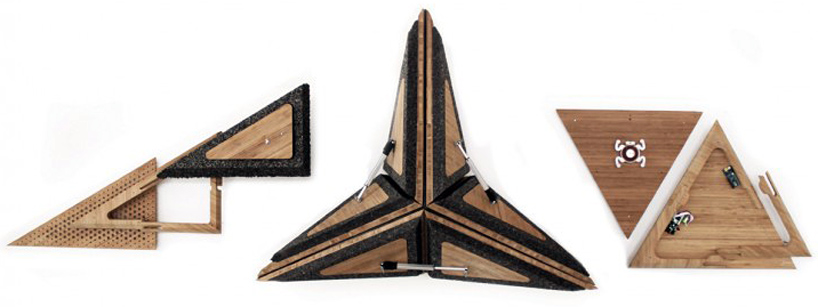
left: (left to right) porous expanded polypropylene (PEPP) panel; solid insert, electroacoustic framework
center: view of a single 'unit'
right: base structural components
this and all following images © rvtr
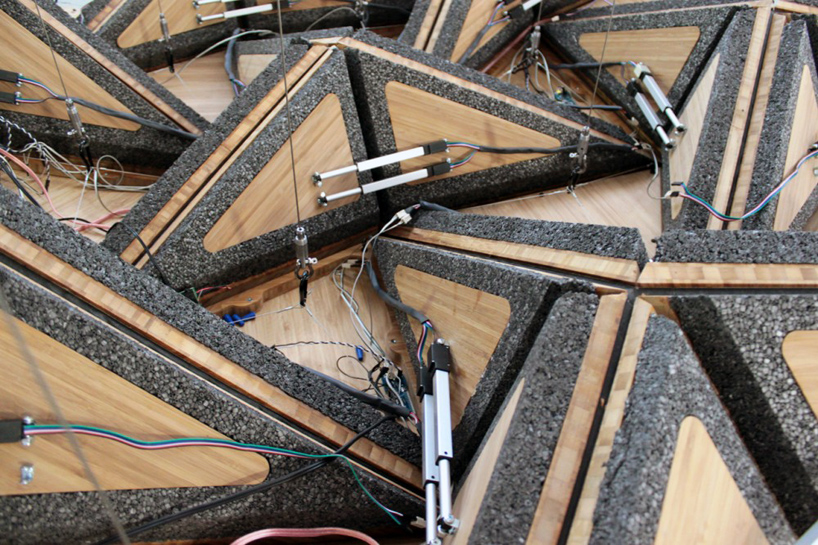
closer view of assembled panel components and circuitry
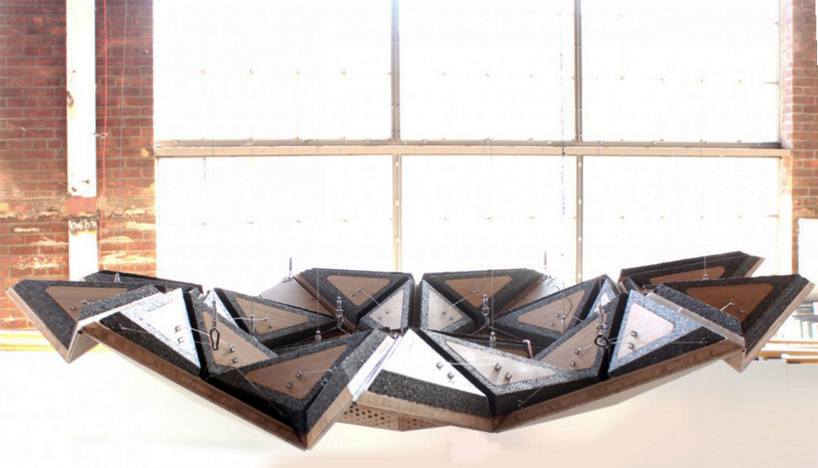
view of a small sample of units hanging

installation view at the 'research through making' exhibition at university of michigan
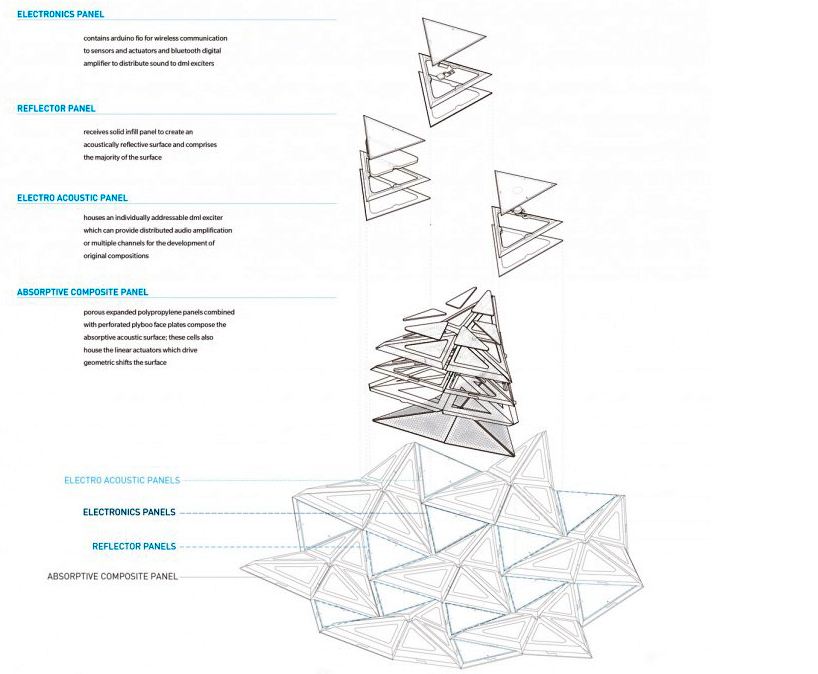
concept notes and diagrams
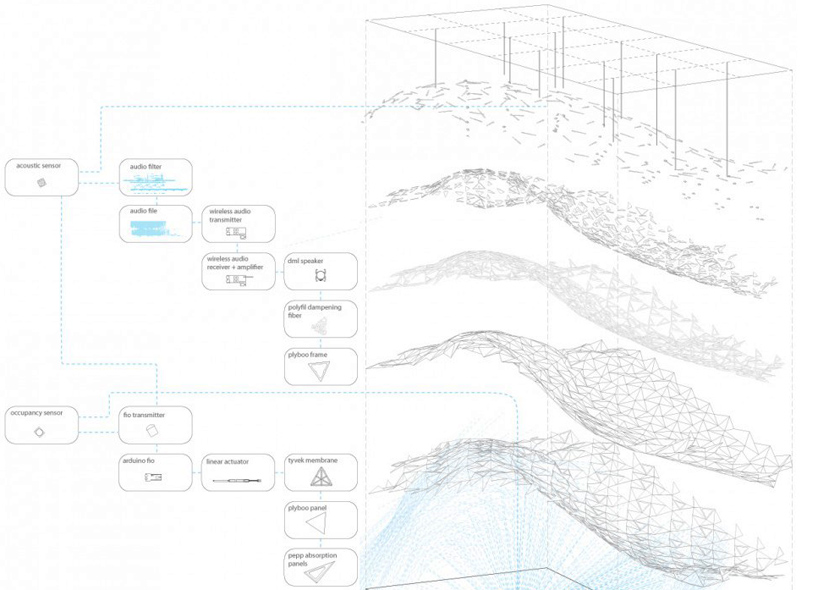
circuitry breakdown
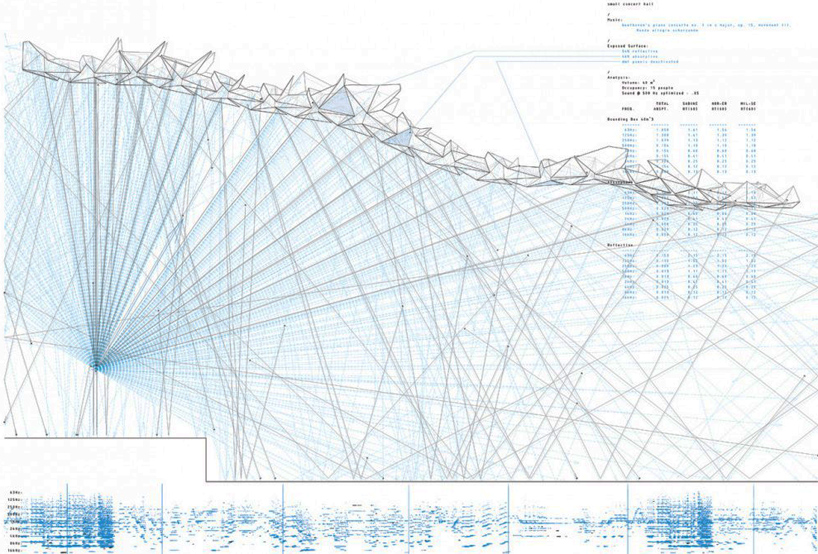
the team fed audio data into computer models of 'resonant chamber' to optimize the transformation of the panels

concept composite of the panels in use as the ceiling for a theatre or concert hall
sped-up video of panels of 'resonant chamber' on exhibition





















